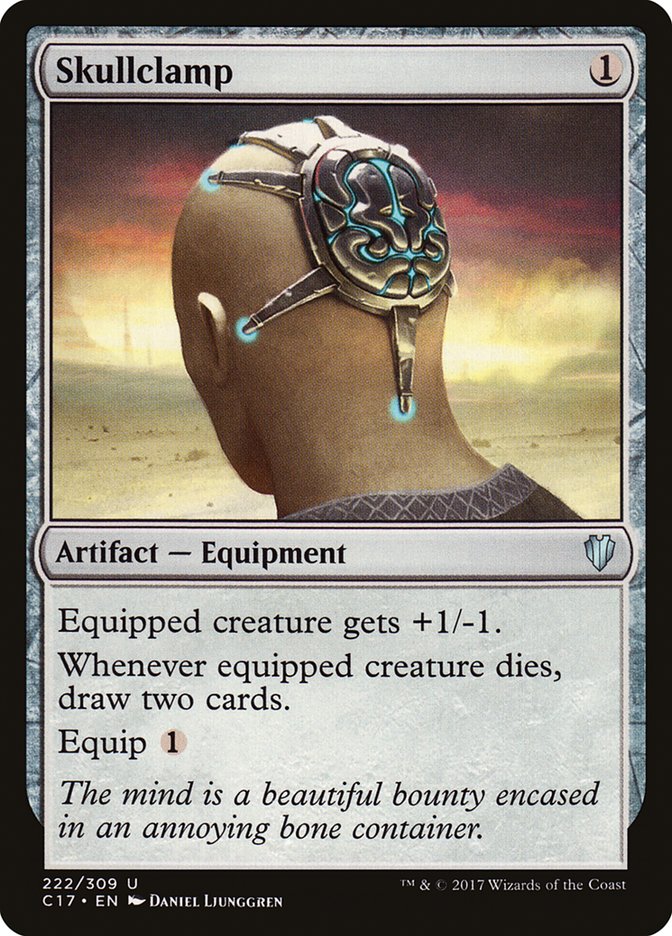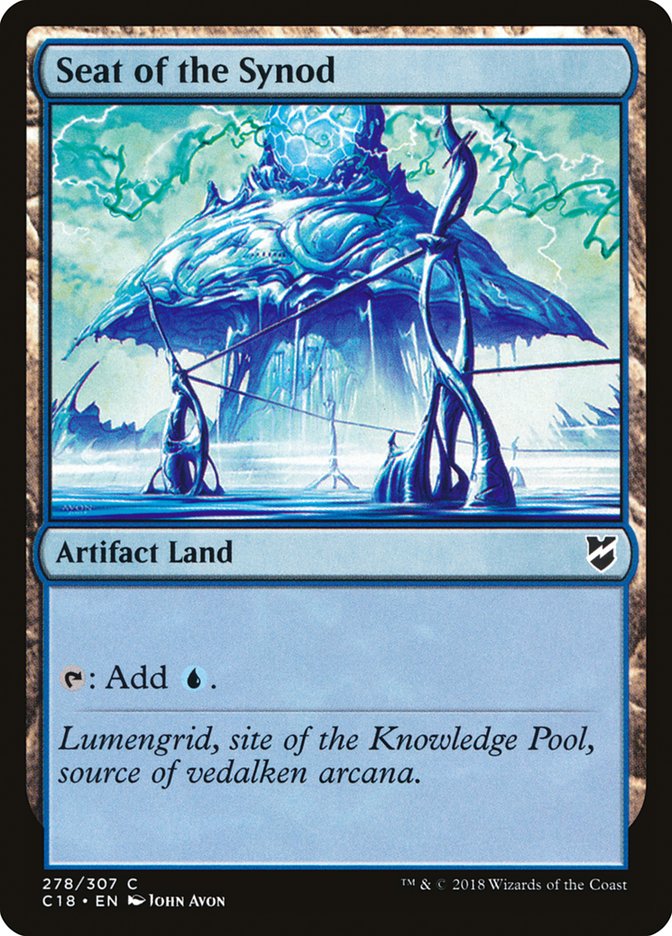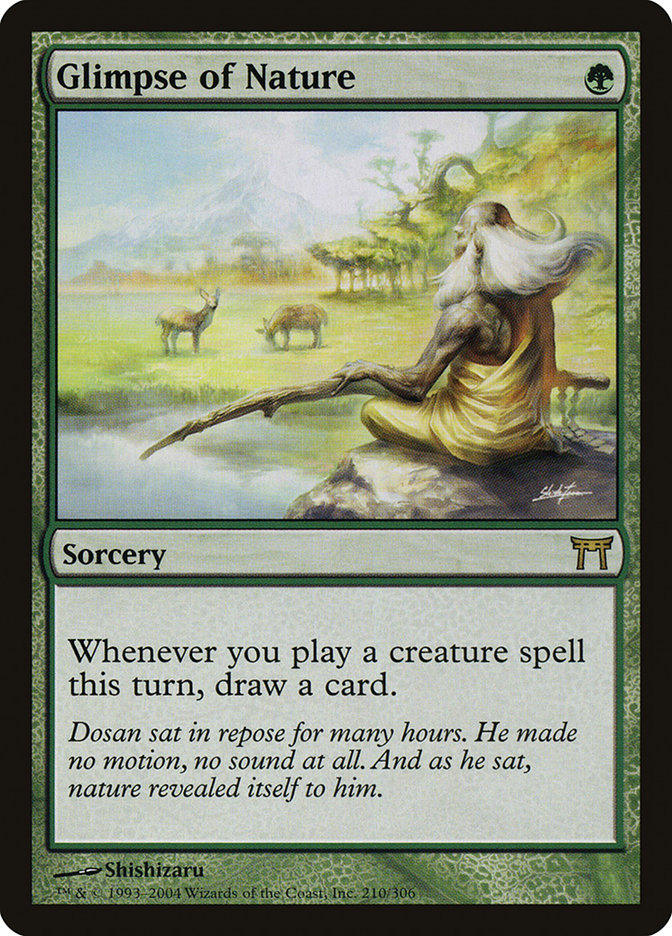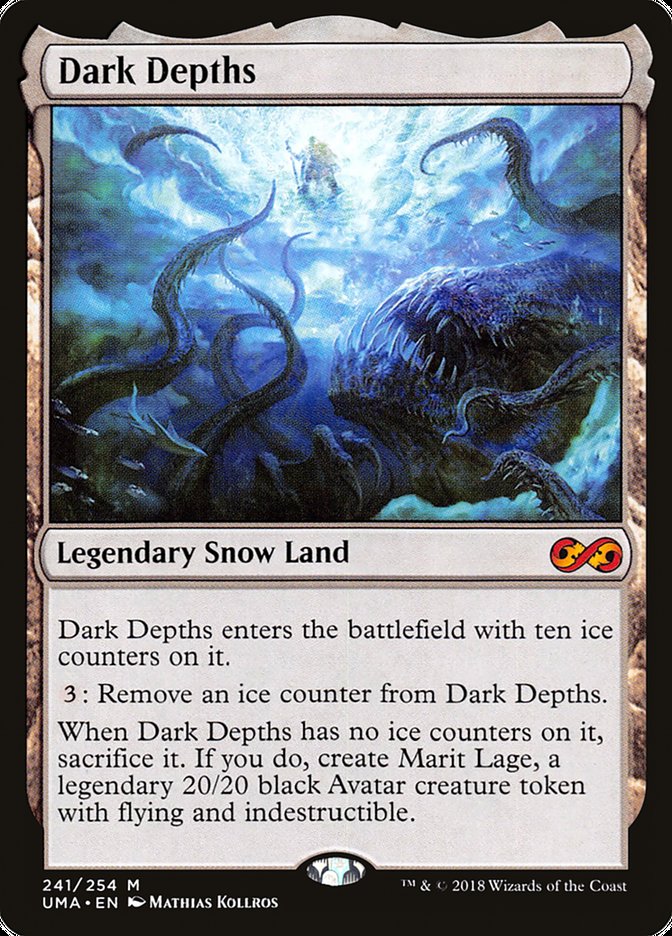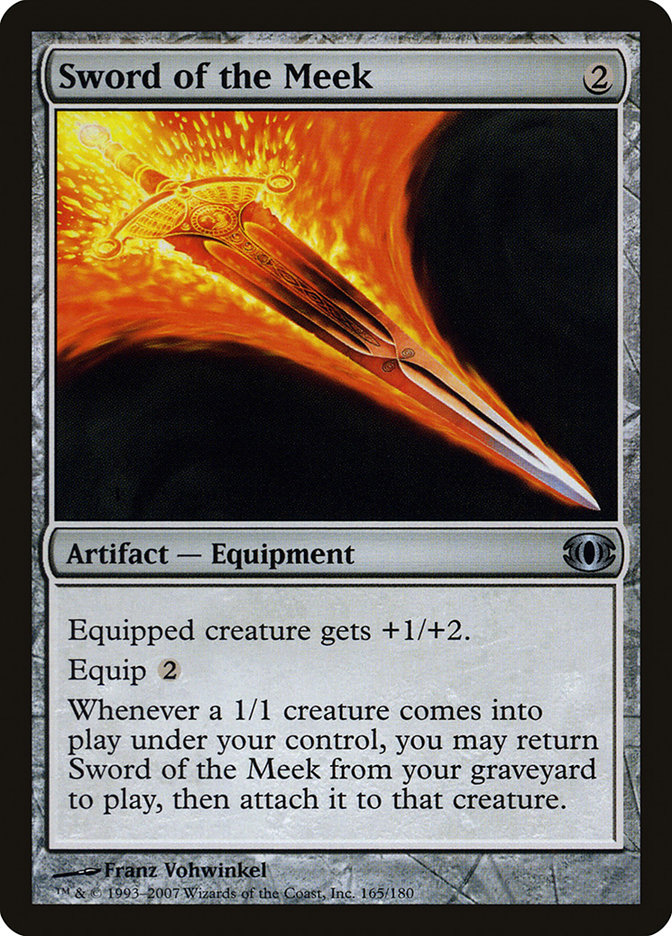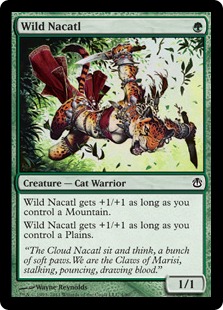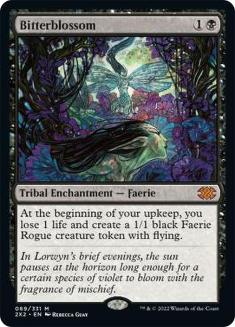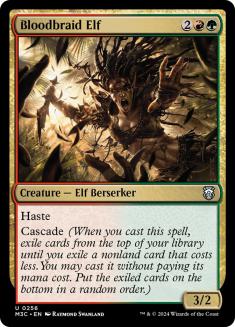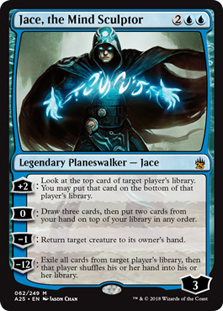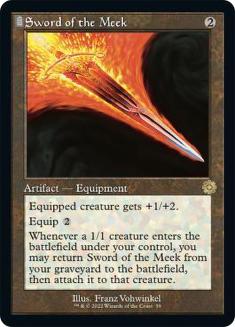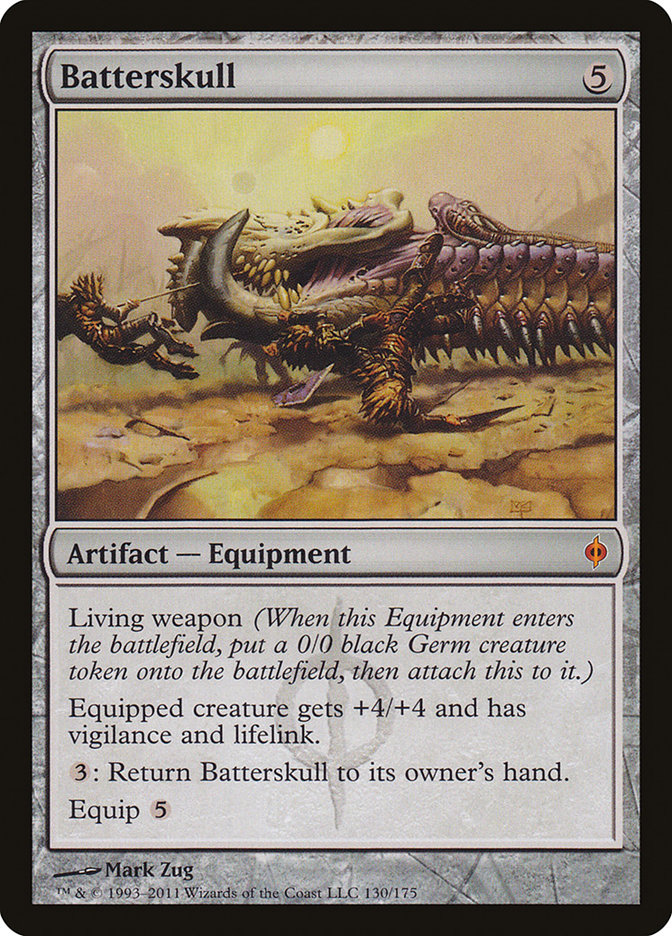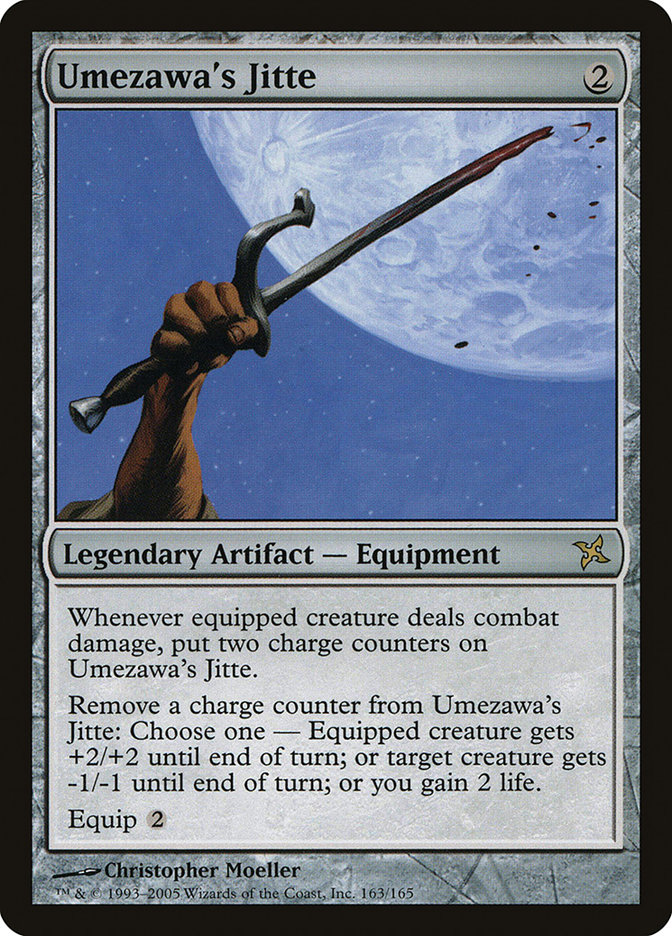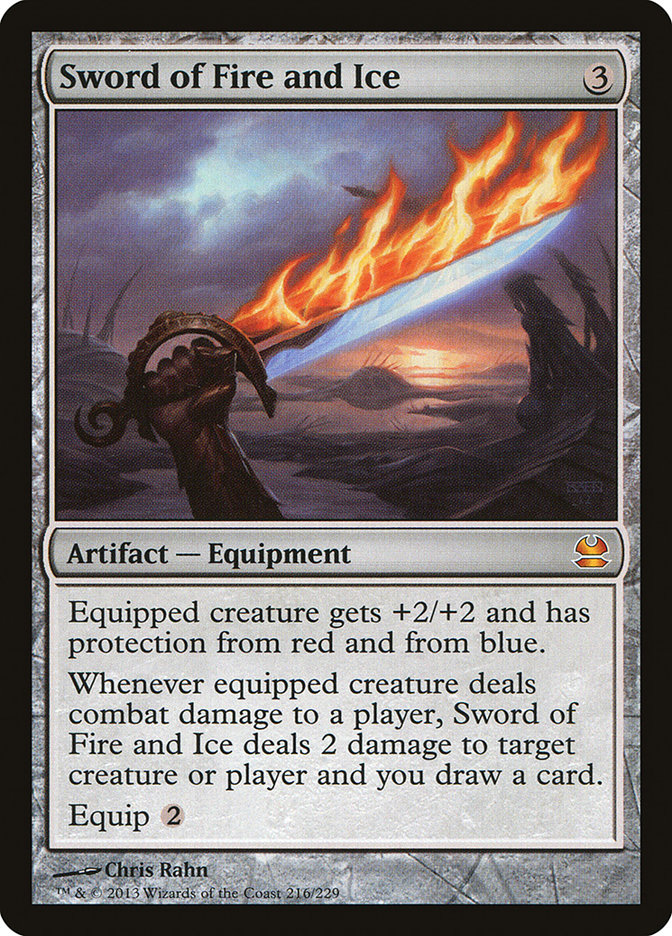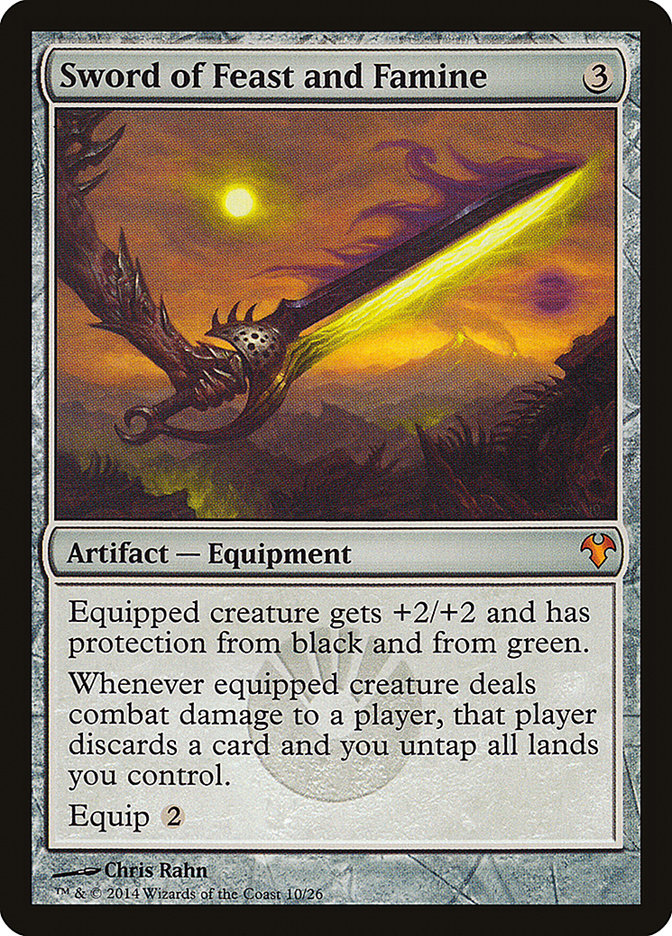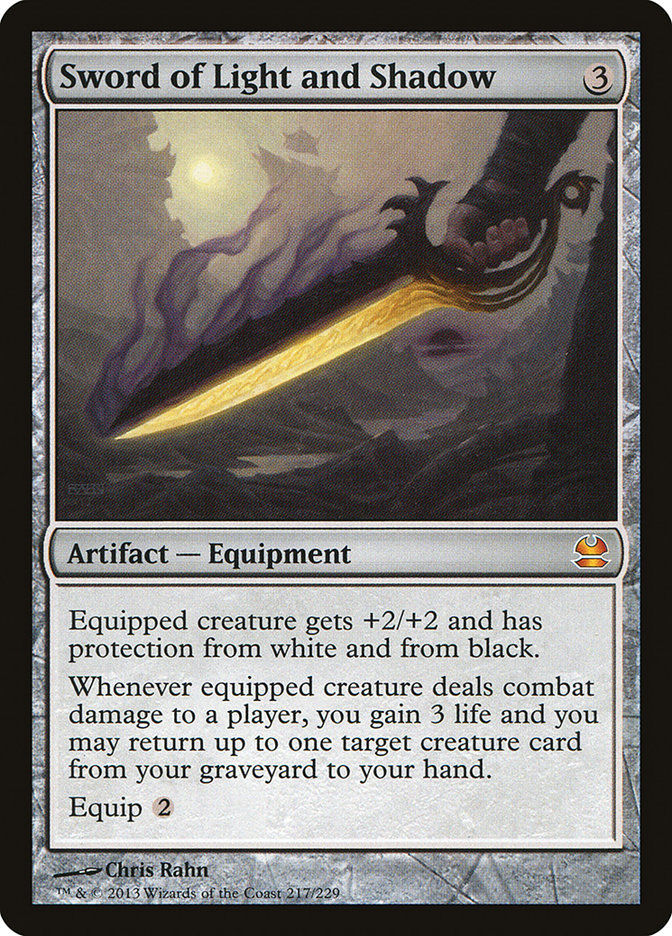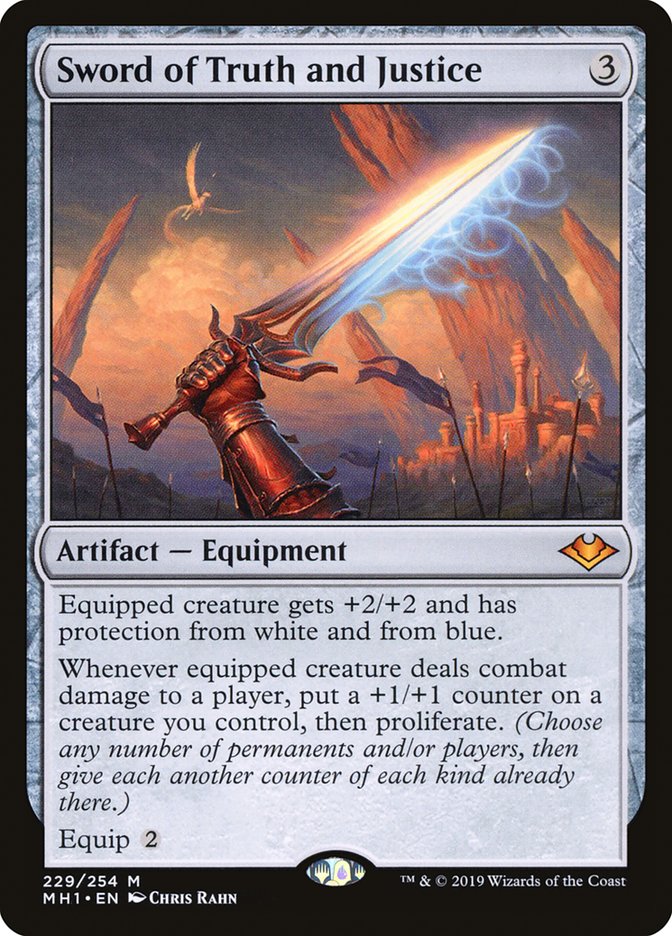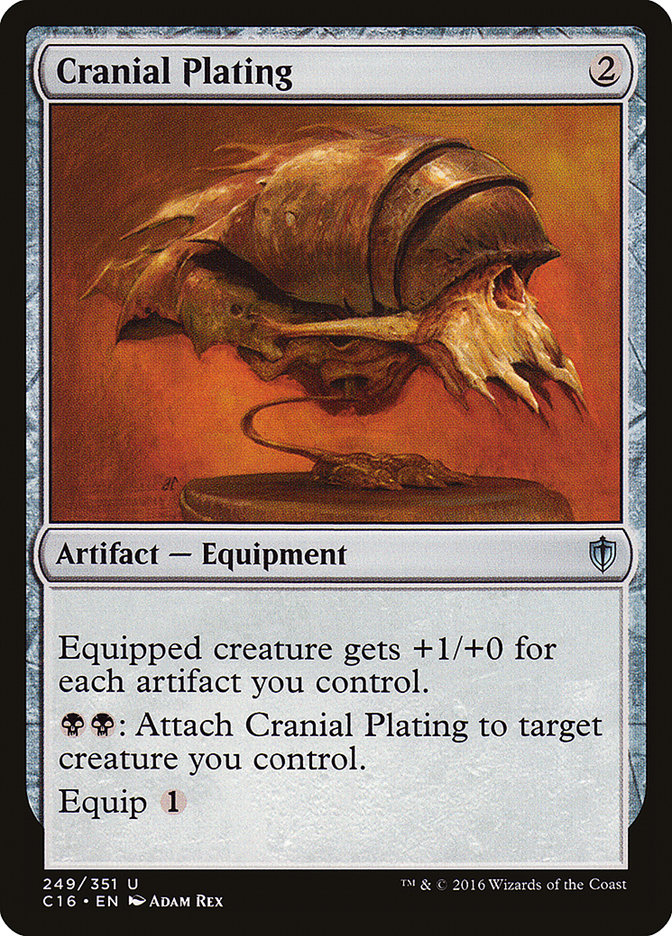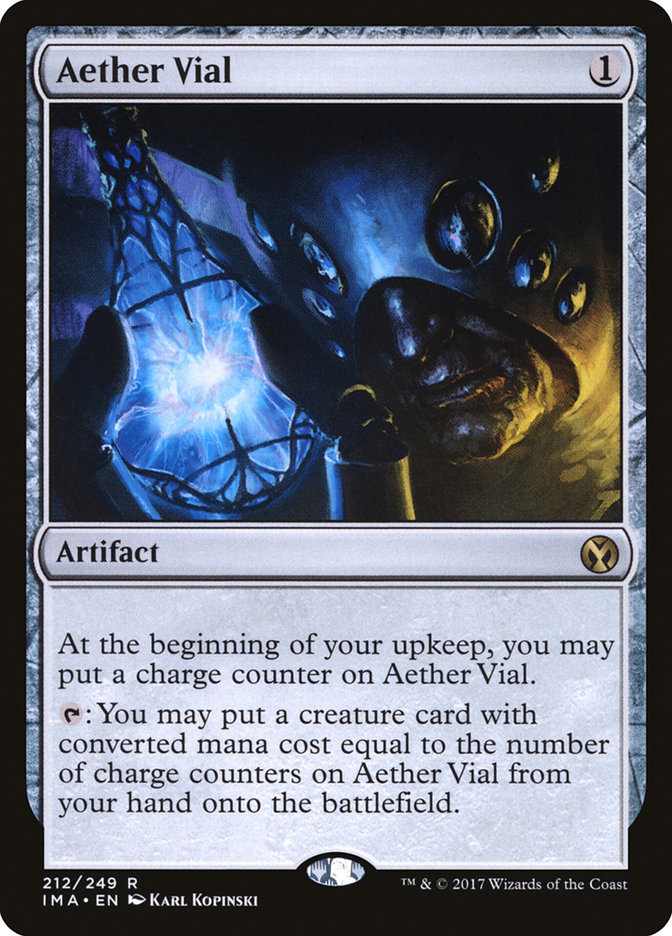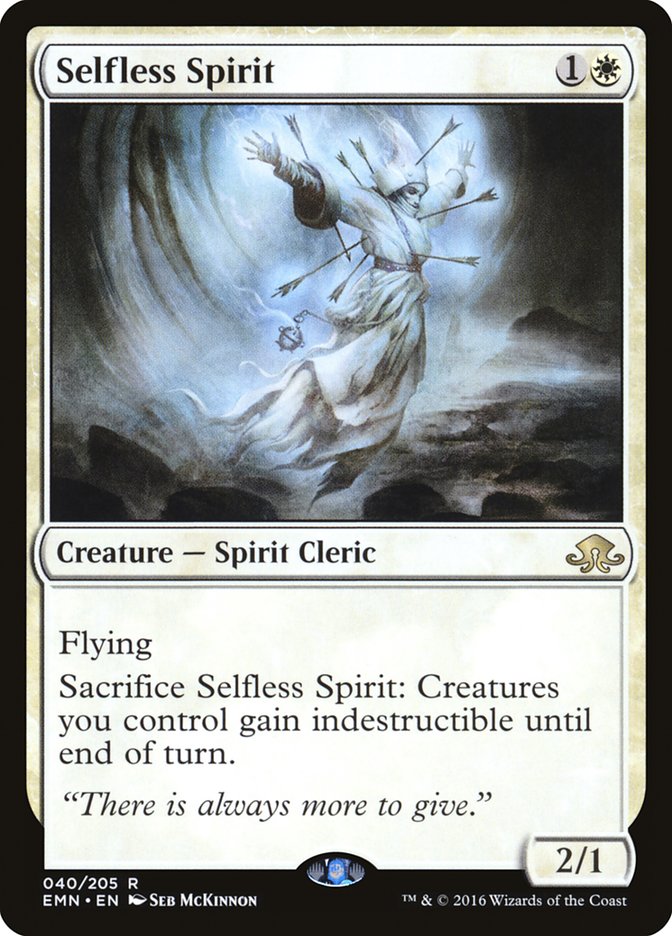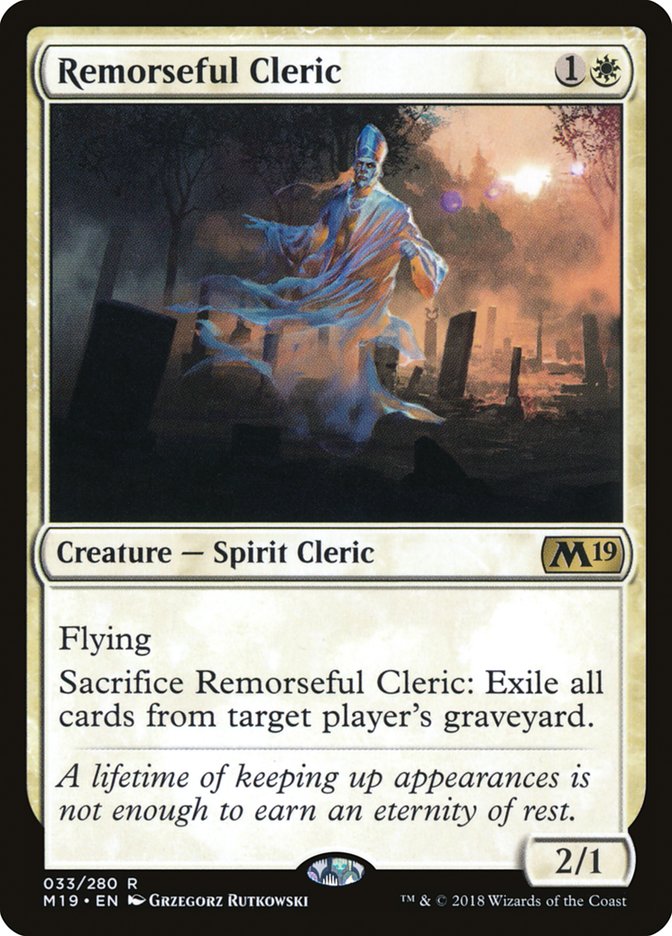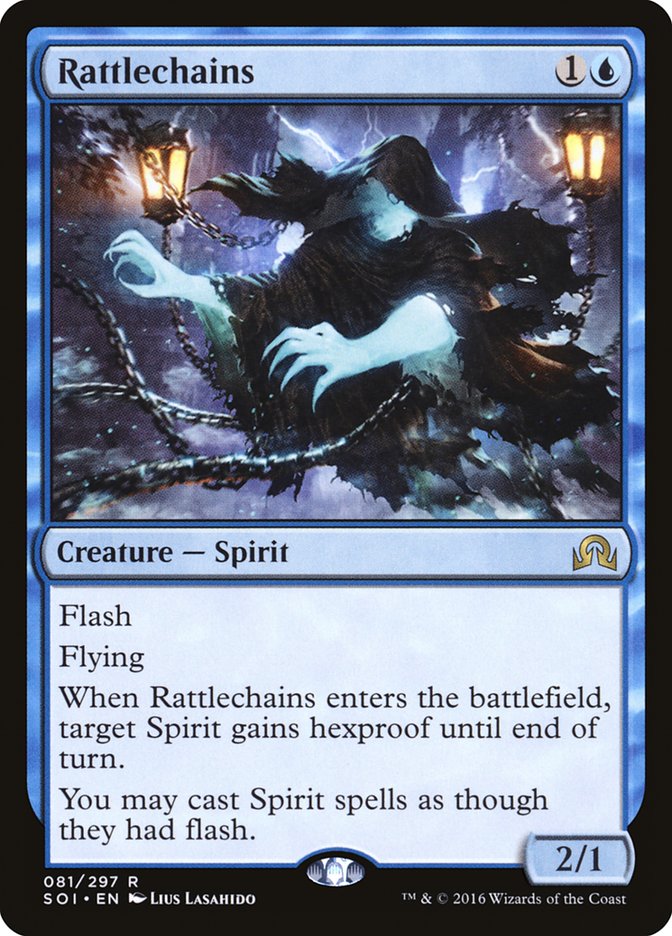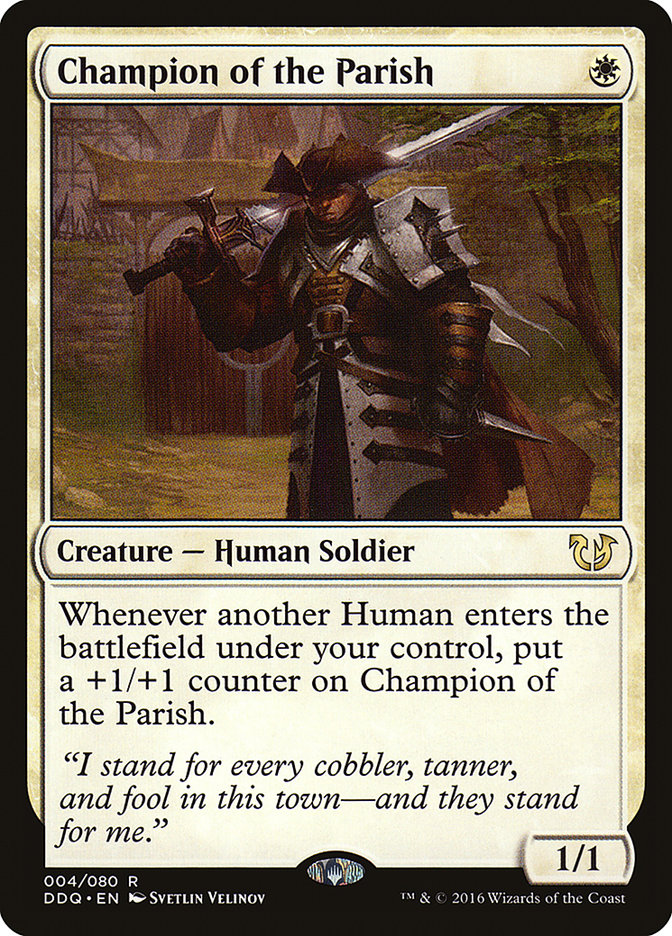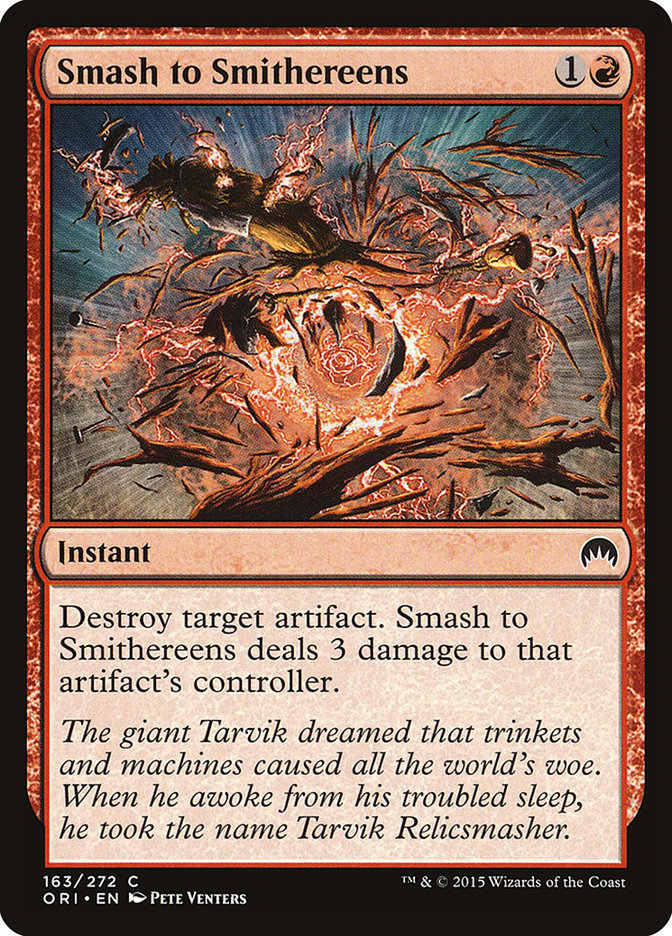There are a ton of great pop culture references to make at the beginning of an article about the unbanning of Stoneforge Mystic.
For those who have been lucky enough to dodge yesterday’s update to the Modern Banned and Restricted list, Stoneforge Mystic is legal in Modern for the first time.
When Modern was first introduced, there were a handful of cards that were immediately banned. These were the cards that either broke Standard when they were legal:
…or cards that were busted when given larger card pools to play with:
As time has passed, power creep has caught up with some of the fairer cards on the list and Wizards of the Coast has been letting things out to play.
With the exception of Golgari Grave-Troll, these unbannings have by and large been successful, and done work to let people play with classic, powerful cards in a wide-open format. Stoneforge Mystic is just the latest in this line of cards that’ll get a chance to see if it can play nicely with the other kids.
With the announcement going live Monday and the SCG Tour making a stop in Dallas on Saturday, there isn’t a ton of time for people who haven’t had the chance to play with Stoneforge Mystic to actually play with or against the card before – the perfect time to create a basic cheat sheet to get the greater Modern community up to speed with what Stoneforge Mystic actually does.
Equipment
To anybody with the literacy necessary to make it through this article, reading the text of Stoneforge Mystic isn’t hard. What can be difficult is knowing everything that Stoneforge Mystic could be grabbing and how that impacts whatever deck is sitting across the table from her.
Before getting into the specifics, what’s important to note about Stoneforge Mystic is that she’ll frequently do different things based on the texture of the game. In the earliest turns, she’s likely to get whatever card is the most powerful thing to do if she’s left unchecked. In the later turns, she’s prone to get something that may be a bit more mana-hungry, or something that is more brutal in the given situation.
That’s relevant to note, because almost zero Stoneforge Mystic decks are only going to have one piece of Equipment that they’ll be getting out of the library. It will usually be somewhere between two and four total equipment in the 75 that Stoneforge Mystic’s controller will be able to choose for the situation.
Batterskull is the most common thing that people tend to bring up with Stoneforge Mystic, as it plays well to the battlefield in grindy games and doesn’t demand any kind of equip cost to get the party started.
Against most traditional aggressive strategies, Batterskull is going to be the first thing that a Stoneforge pilot grabs from their library to cheat onto the battlefield with Mystic’s activated ability.
Just kidding. Not legal. Next.
The second-most-searched-for piece of Equipment is Sword of Fire and Ice. It draws cards, the trigger impacts the battlefield, and the protection can end up being relevant – it just does a little bit of everything.
From here, things get a little bit less predictable, but are worth noting based on the shell that she appears in:
Any deck that is grindy and afraid of tapping out is going to lean into Sword of Feast and Famine. It provides similar grindy elements as ‘Fire and Ice, but it doesn’t demand keeping one’s shields down during the opponent’s turn.
Sword of Light and Shadow is great in creature-heavy decks when paired against removal-heavy ones. Decks that care about amassing a bunch of specific creatures in particular, such as Azorius Spirits, are going to be interested in having ways to buy back specific creatures from the graveyard whenever they can get any kind of leverage during the combat step.
This Sword providing protection from Path to Exile and Fatal Push, while also making it so most of the creatures in Humans can’t block, makes it a strong competitor for strongest passive text as well.
This is the area where things may start reaching a little bit, but Hardened Scales in Modern is going to be interested in something like Sword of Truth and Justice in a Stoneforge Mystic package to fight grindier fights and beef up all their creatures.
On the topic of artifact decks, Stoneforge Mystic being able to function as additional payoff cards isn’t something to be ignored. It might not always be Cranial Plating, but this isn’t the kind of interaction anybody wants to be caught off-guard while playing against.
In the case of the Whirza artifact deck, Stoneforge Mystic even has the ability to perform multiple roles – both as a tool in grindy fair games and a way to find a combo piece when that’s the most important thing in the moment.
Stoneforge Mystic Decks
Taking all of that into account, it becomes a little easier to visualize what opponents’ play patterns are going to look like when they have Stoneforge Mystic. It also gets easier to tell what she’s doing when she’s immediately grabbing Equipment as soon as she enters the battlefield, so what’s the best way to preemptively tell if an opponent may be up to some Artificer-y nonsense ahead of time? Getting a feel for the kinds of decks that are in the market for Stoneforge Mystic:
Creatures (11)
Planeswalkers (6)
Lands (25)
Spells (18)

Stoneforge Mystic is most frequently going to find herself in white midrange strategies, but not always strategies that have white as their primary color. Stoneblade is going to be one of the most common places that people start with their Stoneforge decks, because it’s what dominated Standard for so long, largely on the back of how powerful the interaction between Stoneforge Mystic and Jace, the Mind Sculptor’s Brainstorm mode.
Creatures (8)
Planeswalkers (2)
Lands (20)
Spells (30)

MPL member Piotr Glogowski started here yesterday with his take on the combo-artifact Stoneforge Mystic package, also saying that while this is likely a bit too midrange-y, it gives us an idea of what a Stoneforge package may look like in this archetype.
Creatures (29)
- 4 Noble Hierarch
- 4 Stoneforge Mystic
- 2 Phantasmal Image
- 3 Drogskol Captain
- 4 Spell Queller
- 4 Selfless Spirit
- 4 Mausoleum Wanderer
- 4 Supreme Phantom
Lands (21)
Spells (10)

A bit of a personal plug, but Bant Spirits is one of the decks that immediately piqued my interest with the Stoneforge unban for a few reasons:
It plays to Stoneforge Mystic’s strengths, but not always needing to tap out, while also giving a bunch of bodies for leftover equipment to attach themselves to.
There’s a large number of ways for this deck to actually untap with a Stoneforge Mystic, between ways to giving it flash and forms of protection.
Historically, one of the biggest weaknesses of Spirits variants is a fairly anemic selection of two-mana creatures in the deck. Unsurprisingly, the best plays-well-with-creatures two-drop becoming legal flips that on its head.
Finally, Bant Spirits tends to line up well against fair creature decks, thanks to the evasion built in with its own creatures, while having the ability to play a reasonable flash game against the likes of decks in the vein of Humans.
Unlike the initial Stoneblade list at the top, both the Whirza and Bant Spirit decks are archetypes that existed in iterations similar to their Stoneforge-fueled takes previous to the banning, but now have access to an additional tool in Stoneforge Mystic. Most midrange and control decks that have white in them are going to have access to Stoneforge Mystic as a backup plan, at a fairly low cost to whatever else it is that their deck is interested in doing. Keep that in mind when playing against any deck that is playing a fair and a high number of white sources of mana.
Playing with Stoneforge Mystic
Knowing what decks look like that include Stoneforge Mystic isn’t always going to help suss out what the best plays are once you have Stoneforge Mystic in your hand on the second turn. Here are some basic things to think about.
Whenever Stoneforge Mystic enters the battlefield, the question of what Equipment to find isn’t always going to be as clear-cut as one would assume. The biggest thing that it’s going to come down to is how important it is to get something that can end the game quickly or something that can play a long, grindy game of Magic.
This thought process is why Batterskull is so frequently going to be a staple in Stoneforge Mystic decks. It’s the singular piece of Equipment that’s going to be the hardest-hitting for the lowest cost. This is going to be particularly important in a format like Modern, where some games end as quickly as the third turn and having a way to try and bring the game closer and closer to a natural conclusion (in your favor) is going to be the make or break for decks that ultimately have a finite amount of disruption.
The decks with linear gameplans that don’t have a bunch of disruption are the place where these decks are going to want something like Batterskull, because it’s a way to punish players for not immediately dealing with a Stoneforge Mystic.
The various “blades” are going to be the best tool for the job when buckling in for a longer game, where card advantage is going to be the thing that matters the most. The reason that the Swords do this a bit better than Batterskull is because they allow their controllers to actually convert any traction into raw cards.
Any swings that Batterskull creates are going to be in the form of life and not being able to do anything other than create a new Germ for eight mana isn’t the type of thing that’s always going to be able to stand up in a fight over card advantage.
On top of the difference in what’s important, grindy matchups tend to be the place where 1/2s are easily to kill on sight and casting a five-mana artifact isn’t always going to be the surest way to victory. A Sword, on the other hand, will be easier to slip into a curve, or not actually invest mana into until the turn it will have an immediate impact on the battlefield (other than generating a body).
These dynamics can change based on the texture of a game, but most situations are going to involve prioritizing things through this lens.
In a vein similar to the Batterskull situation, something like Sword of the Meek that will close the game out faster than Batterskull on the back of a combo will be the thing to grab with Stoneforge Mystic. In this case, it isn’t a matter of Stoneforge Mystic living or dying; it’s about understanding that grinding the opponent out isn’t the thing that you need to be doing, and rather than trying to use Stoneforge Mystic to fight that fight, players with the Thopter Foundry / Sword of the Meek combo can put themselves one card closer to immediately winning the game.
Playing Against Stoneforge Mystic
When facing down the Kor, there are two things you need to be asking yourself:
1. Do I fight the creatures?
2. Do I fight the Equipment?
This is naturally going to vary from matchup to matchup, but take a control deck, for example.
Creatures (4)
Planeswalkers (8)
Lands (24)
Spells (24)

A traditional control deck is going to be interested in trying to fight off any creatures that could pick up Equipment, but otherwise aren’t particularly worried about the Equipment themselves. Think of it this way: if they can’t attack with any creatures, a Sword of Fire and Ice isn’t actually worth a card.
This means that these decks are going to play similarly to how they did before, with the exception being that they may pay a bit of mind towards Batterskull, as it can theoretically generate a ton of 0/0 Germ bodies over the course of a long game.
On the other side of things, take Burn:
Creatures (12)
Lands (20)
Spells (28)
- 4 Lightning Bolt
- 4 Lava Spike
- 4 Lightning Helix
- 4 Rift Bolt
- 4 Searing Blaze
- 4 Boros Charm
- 4 Skewer the Critics
Sideboard

Burn doesn’t have the ability to answer a ton of creatures, due to its lack of card advantage and sweepers. This means that it’s going to have to either be able to completely ignore Stoneforge Mystic or go after the Equipment.
Well, unfortunately for Burn, dealing twenty points of damage through a 4/4 vigilant lifelink creature is a pretty tall order, so sidestepping the issue isn’t much of a realistic option.
This means that answering the Equipment is the other thing that Burn can try to do.
This means that fighting the Equipment, in the form of artifact removal, is going to be the best bet for a fair linear deck like Burn.
Creatures (8)
Planeswalkers (6)
Lands (19)
Spells (27)

For a deck that isn’t trying to play a traditional game, like Mono-Green Tron, ignoring Stoneforge Mystic and her pesky tools may be easier than diluting its own deck with artifact- or creature-hate. That’s because Mono-Green Tron is generally going to be operating under the assumption that, whatever Equipment Stoneforge Mystic finds, it isn’t going to line up well against Karn Liberated, Wurmcoil Engine, Oblivion Stone, and so on.
Learning the Blade
With a card as powerful as Stoneforge Mystic, it’s always hard to tell exactly how much, and in what ways, Modern will be affected. The format is certainly of higher power than the Standard format she dominated and doesn’t have the same level of answers to prolong games that Legacy offers. We’ll spend the meantime figuring out exactly how broken, or not, Stoneforge Mystic is in the next few months, and then know whether setting her free was a good call on Wizards of the Coast’s part, or a colossal mistake.



